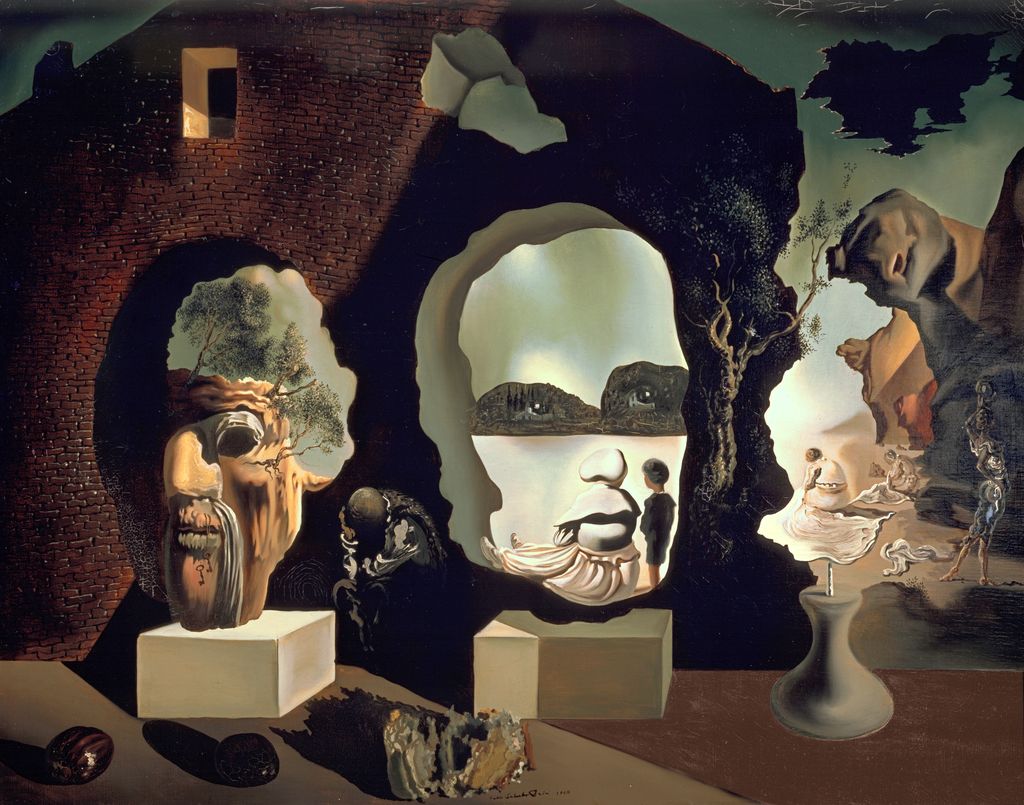Old Age, Adolescene, Infancy (The Three Ages), 1940 by Salvador Dali

Painted during World War II while Dali was in exile in America. Old Age, Adolescence, Infancy (The Three Ages) represents a nostalgic return to origins from the perspective of a mature artist at the height of his career. At the time he executed this painting Dali was working on his great autobiography, The Secret Life of Salvador Dali, whose complex structure of historical anecdotes, true and false childhood memories, and oneiric passages modeled on dream narratives by Sigmund Freud is given visual form in The Three Ages.
The multiple image returns in the form of three heads that are configured from landscape and figural elements. Old age is represented on the left by the image of a bearded man whose face is formed by a rocky precipice seen through the opening in a ruined brick wall. For the central figure of adolescence Dali returns to the image of the young child with his wet nurse, both of whom look across the Bay of Cadaques to distant houses in the background. Finally, infancy is allegorized in the form of a smaller face whose mouth is comprised of an atavistic, secondary image of a woman mending a fishing net on the beach. As these images come in and out of focus through the push and pull of foreground and background elements, Dali in effect stages the temporal experience of subjectivity: the persistence of memory.























